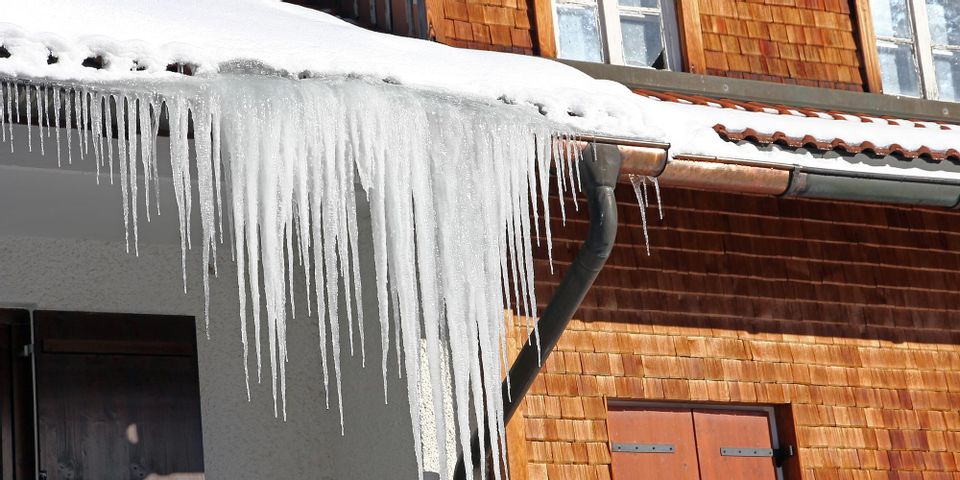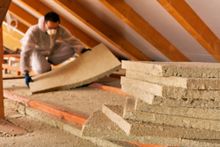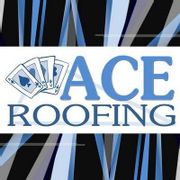
Even as far south as North Carolina, one of the hazards of winter is the formation of ice dams on the roofs of houses and commercial buildings. Ice dams not only damage shingles, lead to water damage, and cause expensive roof repair, but they can also be dangerous to passersby. If you’re unfamiliar with them and how they form, the information below should give you a better chance of preventing them.
How Do Ice Dams Form?
During winter, the freeze-thaw cycle causes melted snow to trickle down the roof toward the eaves. The eave area is colder than the rest of the roof because it’s above open air instead of the heated interior. Here, the melted snow refreezes and forms a barrier of ice that prevents additional moisture from flowing off the roof or entering the rain gutter. As it grows larger, this ice dam can damage roofing materials and allow water to back up underneath the shingles, resulting in roof leaks, a soggy support structure, and interior water damage. To avoid roof repairs, prevent ice dams from forming in the first place.
How Can You Prevent Ice Dams?
 Ice dams begin forming when a warm roof starts melting snow even as air temps are below freezing. To avoid this, make sure your roof and attic are thoroughly insulated. This prevents heat loss through the roof and minimizes snowmelt. Next, clean your rain gutters regularly to prevent clogged troughs and downspouts. That way, melting snow can be directed away from the roof. Finally, hire a professional to clear your roof of snow. The less moisture there is on the roof, the less you'll have to contend with during freeze-thaw cycles and the fewer roof repairs you'll face.
Ice dams begin forming when a warm roof starts melting snow even as air temps are below freezing. To avoid this, make sure your roof and attic are thoroughly insulated. This prevents heat loss through the roof and minimizes snowmelt. Next, clean your rain gutters regularly to prevent clogged troughs and downspouts. That way, melting snow can be directed away from the roof. Finally, hire a professional to clear your roof of snow. The less moisture there is on the roof, the less you'll have to contend with during freeze-thaw cycles and the fewer roof repairs you'll face.
If ice dams have damaged your roof, contact Ace Roofing in Asheboro, NC, for expert roof repair. This locally owned, fully licensed and insured roofing contractor serves businesses and homeowners throughout the Piedmont Triad area. Visit their website to submit an information request or call (336) 308-4312 to schedule a consultation.
About the Business
Have a question? Ask the experts!
Send your question

